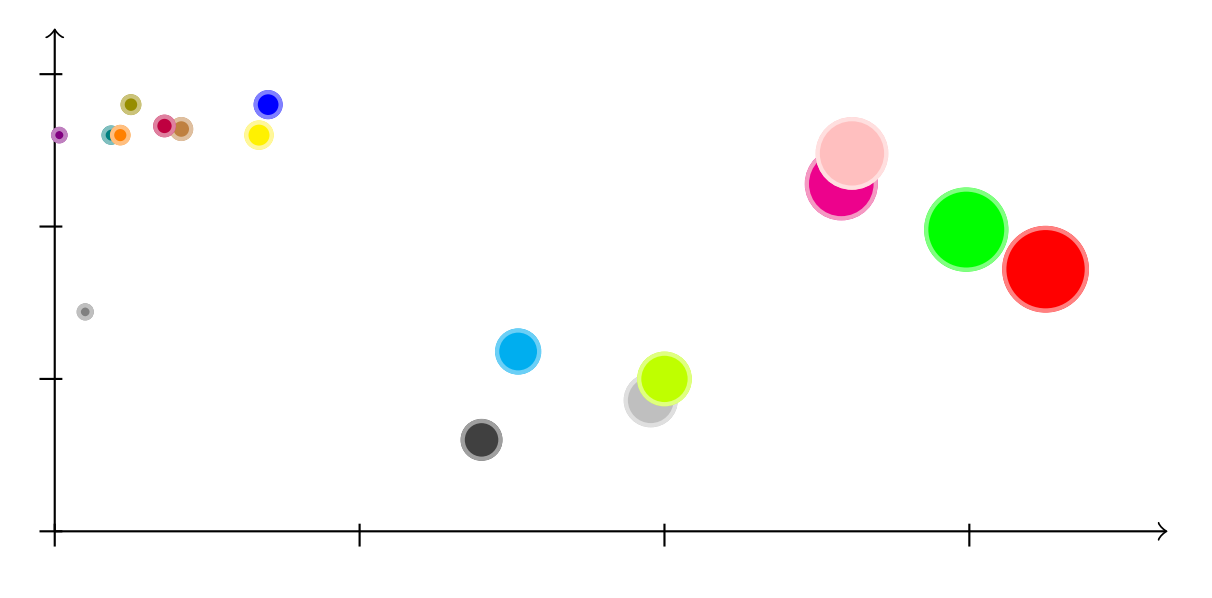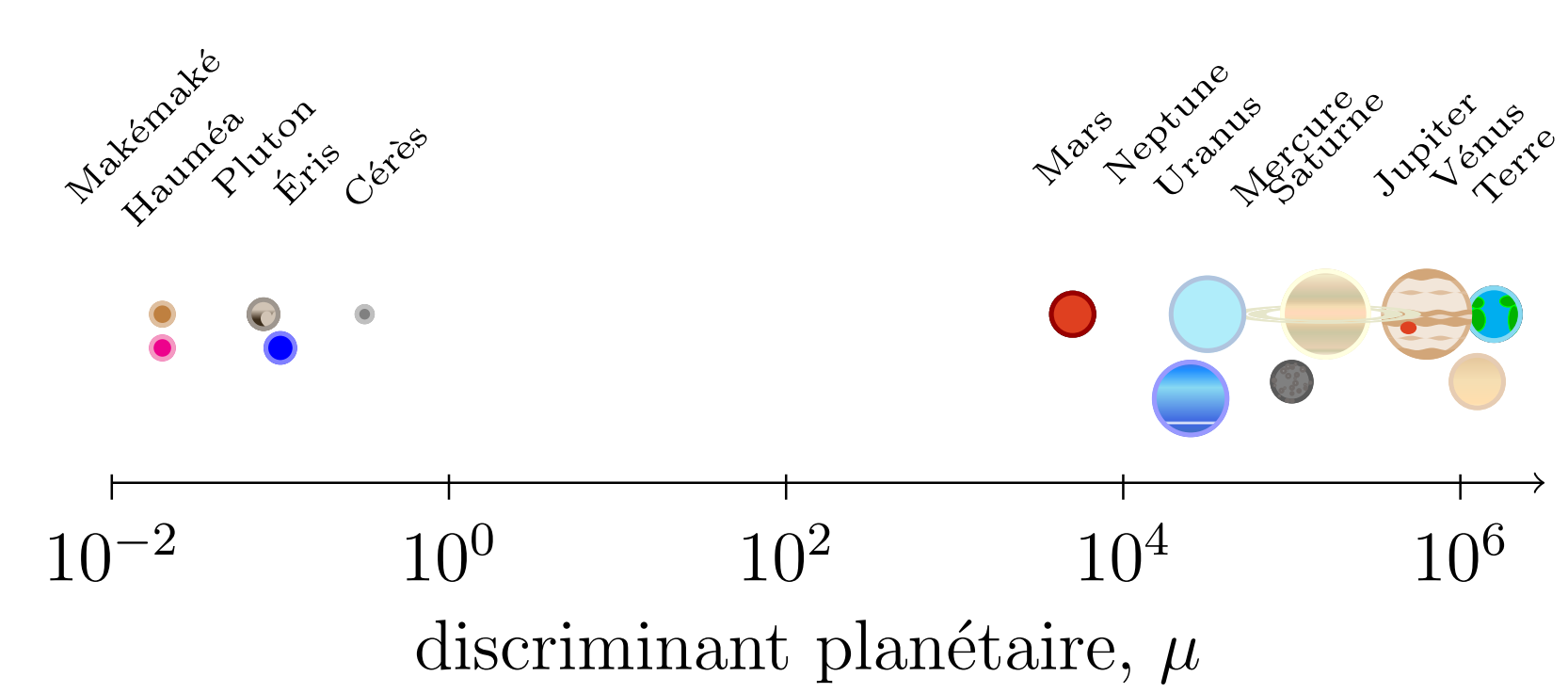Pluto isn’t a planet
But that's OK

Since the early 20th century, the International Astronomical Union or IAU – an organization that brings together astronomers from around the world – defines the names used by astronomers to talk about objects in the Solar System. In August 2006, the IAU decided a planet is an object that
- goes around the Sun,
- is almost a sphere (i.e. is in static equilibrium),
- cleared the neighborhood of its orbit.
At the same time, astronomers gave a name to a new category of objects: dwarf planets. These objects fulfill the first two conditions for being a planet, but not the third.
Based on these definitions, the Solar System has eight planets and Pluto is not a planet, but rather a dwarf planet. Some people consider that the IAU downgraded Pluto and advocate for the definition of the word “planet” to be changed so that it includes Pluto.
Historical aside
In the 18th century, Johann Bode noticed that the planets seem to follow a geometrical sequence. From this assumption, he deduced that there was a missing planet between Mars and Jupiter. Bode and other astronomers then set out to track it down. Finally in 1801, Giuseppe Piazzi noticed a ”star” that was slowly moving in the sky: he had just discovered a new planet that he named Ceres.
Over the course of the following years, many other objects were discovered between Mars and Jupiter. Rather than extend the list of planets indefinitely, astronomers decided to create a new category of objects: the asteroids. You might say Ceres was downgraded from planet to asteroid.
Pluto never really was a planet
In the mid 19th century, astronomers noticed that Uranus doesn’t quite follow Newton’s law of gravi- tation. Slight perturbations in its orbit could be explained by the existence of an eighth planet. Urbain Le Verrier computed the exact location of this hypothetical planet and when Johann Gottfried Galle pointed his telescope in that direction, he indeed found a planet: Neptune.
Neptune also has slight perturbations in its orbit. Some astronomers assumed there must also be a planet beyond Neptune and started the hunt for “Planet X”. In 1930, Clyde Tombaugh found an object that moved relatively to the other stars and named it Pluto.
Astronomers first thought that Pluto was roughly the same mass as the Earth, making it unar- guably a planet. But they soon discovered that it is much smaller. Today, we know that it weighs 500 times less than the Earth. Pluto’s orbit also makes it different from the other planets, and in the 90s, astronomers started to wonder if Pluto should be counted as a planet or as a new kind of object.
In the early 2000, with new and more powerful telescopes, several ”Pluto-like” objects were dis- covered. And as our means of observation get sharper, we expect to keep discovering more and more objects beyond Neptune. Like in the 19th century, astronomers decided to create a new category of objects.
What do you think?

What if you had to classify objects like the circles in the top sketch, where one property is shown on the horizontal axis, and another is shown on the vertical axis. How would you sort them? Perhaps you would say there are two or even three categories?
Each circle represents a planet or a planet-like object from the Solar System. The horizontal axis is the mass and the vertical axis is the distance to the Sun. The big circles on the right are the gas giants, the four circles in the middle are the Earth-like planets and the circles on the left are dwarf planets and dwarf planet candidates. Pluto – the small yellow dot – is very different from the other planets, but rather similar to a bunch of other Solar System objects, so it makes sense to put it in the same category as those other objects but not in the same category as the planets.
But what really distinguishes a planet from a dwarf planet is whether it cleared its orbit. As- tronomers consider the ratio between the mass of an object and the total mass of all the other objects in the same orbit. Objects with a low ratio are on the left: these objects have a lot of other stuff in their orbit. Objects with a high ratio are on the right: these objects are a lot heavier than everything else in their orbit put together.

Closing words
Rather than regret that Pluto is no longer a planet, let’s rejoice in the fact that Solar System is much more complex and interesting than we initially thought. We are constantly discovering new kinds of objects in the vicinity of the Sun, and so we create new categories to classify them. But although classifications are necessary to talk about and study these objects, classifications are also the least interesting part of science, and Pluto is fascinating no matter what category you put it in.

